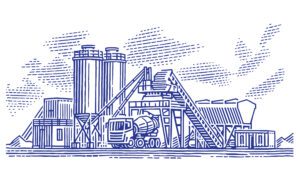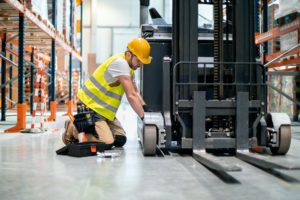Q&A: Scaling Safety in the Process Industries
A version of this article was originally published in the Processing Magazine.
Like with nearly every industry, the COVID-19 pandemic has had widespread impact across the process industries, requiring quick pivots and new strategies. As COVID-19 continues to surge, how can the process industries ensure they remain resilient amid so much disruption?
Processing connected with Ben Cheng, vice president of customer operations at Parsable — a software company that provides connected worker technology to the industrial sector — on the topic of scaling safety in the process industries and how it may be a game-changer as factories continue to operate amid the COVID-19 threat.
Processing: COVID-19 has been our new reality for months now — how do you think the process industries are faring amid the pandemic’s disruption?
Ben Cheng: I think the process industries are still trying to determine how to best adapt to these new realities. Unlike many other industries, however, there is a universal reliance on the process industries to produce so many of the day-to-day items we all need: food, beverages, consumer packaged goods, medicine and more. The fact that most of these essential products are, for the most part, now readily accessible in the U.S. market right now is indicative that COVID-19 hasn’t disrupted the process industries to the point where consumers are experiencing a significant difference. Yes, there were the series of meat plant closures that made headlines several weeks ago, and I suspect we will still see some in the future. But many processing plants that were impacted are starting to re-open in parts of the country where it is currently safe to do so.
Additionally, while the process industries encompass a variety of sectors, many of them are seeing strong demand, and will continue to see that. When demand is there, it can act as a natural barrier against uncertain situations, helping industries to survive amid major disruption.
As there are so many sectors within the processing world, it is hard to generalize how they are doing as a whole — some have certainly taken a major financial hit and now have an oversupply problem on their hands. However, many others continue to do well, with strong demand and concerted efforts to keep their workers healthy and safe.
Processing: What do you see as the biggest challenge the process industries will face in the months or year to come?
BC: Demand is a major challenge, naturally. But it is not exactly something an organization or industry can control. Perhaps a bigger challenge, but one that can be tackled, is the subject of worker safety on the processing plant floor.
Plants need human workers to power them; without people operating the plant floor, there is essentially no plant.
Human workers are invaluable to the process industries, so it is critical that organizations put increased emphasis on safety measures to not only better support their frontline workers, but also to strengthen their business. A commitment to safety during a pandemic situation is the most powerful strategy any industrial organization can implement right now, in my opinion.
Processing: How are processors going to overcome that challenge? Or can they?
BC: It is important to have safety policies in place and discussions about workplace safety with employees, but there is only so much impact that can possibly have. All it takes is one employee with an undiagnosed case of COVID-19 to walk onto the plant floor for everyone around them to be immediately at risk. This is especially true if that employee forgets to hand-wash, put on the proper PPE or socially distance himself or herself from other workers. How effective are safety policies when an organization cannot fully ensure adherence?
That is why technology, specifically connected worker technology, is a good solution to overcoming the safety challenge. It can ensure what safety policies have set out to accomplish and can do it at scale. Connected worker technology helps people better execute work through a digital approach, through mobile devices. It connects workers to the people, information, systems and machines that can help them do their jobs more safely and more effectively.
Instead of 6-inch binders full of standard operating procedures (SOPs) on paper, connected worker platforms digitize these SOPs so that workers have immediate, easy access to them as they move through their respective tasks.
Digitized SOPs essentially offer real-time guidance on how to best execute work, as well as the key steps to take to ensure work is done accurately.
In the age of COVID-19, digital SOPs are critical to ensuring safety, as well. Plant managers can make changes to SOPs at any time so that the most up-to-date safety policies and steps are integrated into the work itself. Every time a safety policy is revised or a new regulation is issued, those updates can be immediately pushed out to — and followed by — the entire team, plant and across many plants. You can’t do that with paper.
For example, SOPs can include safety guidelines, sending push alerts to workers to remind them to wash their hands before handling equipment, do temperature checks upon entering the facility, wear masks when social distancing is not possible, and more. Any policy in place can then be entered into the connected worker platform. Workers need to physically check off that they have adhered to those policies, much like they would check off when they complete a task within a procedure. It ensures safety measures are physically carried out by workers, making adherence to those measures much more likely.
Connected worker technology also makes it more possible for workers to have less physical interaction with each other. Think about the plant shift cycle: the hand-off that occurs between shifts often requires interaction between the shift leaving and the shift entering the plant, to ensure processes are effectively taken over from one shift to the other.
Connected worker technology captures worker data and progress in its system so it knows exactly where certain processes were left with one person and where the next person needs to pick it up.
Another key element of the technology is that it allows for socially distanced collaboration. Workers can upload photos and video of their work directly into the platform to share, discuss and get feedback from colleagues or managers who can pull up the multimedia assets on their own devices, limiting in-person interaction. And when a quality signature is required for a batch release, it can now be obtained digitally instead of on paper.
These all support the concept of safety at scale — a single technology can instantly create safer environments for every individual plant worker.
Processing: Ensuring safety at the individual level is certainly important — does the technology also give plant managers more insight into how safety measures are being adhered to across the board? Is there any visibility into that?
BC: Yes. The platform captures all worker activity data, and plant managers do have access to dashboards where that data can be displayed on a team, plant and multiple-plant level. Where that level of visibility used to be beneficial to them from an efficiency standpoint, it is now even important from a safety standpoint.
Additionally, if a plant worker is diagnosed with COVID-19, plants can leverage connected worker data for contact tracing. It can help determine where in the plant the worker was stationed recently, which processes the worker oversaw, who the worker last encountered and more. It offers a roadmap for determining how much impact one person with a virus may have had on an organization, and allows the company to better address how to best move forward: Is the threat that the virus spread within the plant strong, based on the worker’s recent activity? Or was the worker more isolated, and the threat of spread more minimal? These are important questions plant management needs to ask themselves during these unprecedented times, and connected worker technology can help lead to the right answer.
Processing: Will this technology have a place in the post-COVID-19 world, assuming the threat of the virus dissipates?
BC: Absolutely. The pandemic only highlights the value of the human worker on the factory floor and the need for technology to better support them. Safety should always be top of mind for organizations, with or without the threat of COVID-19, so I only see this type of technology becoming more relevant as safety is increasingly paired with efficiency.







